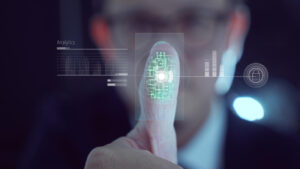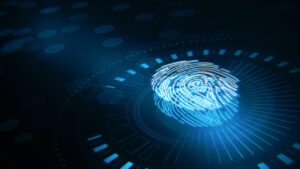Choosing the right fingerprint scanner for your needs can be daunting, especially with so many different types on the market. Whether for personal safety and security or convenience, you need to make sure you select the best model that suits your individual requirements.
With accurate biometric authorization and easy setup, identifying the perfect fingerprint scanner doesn’t have to be complicated—read on to discover what features are essential in finding the optimal scan technology.
Factors to consider when choosing a fingerprint scanner
1. Sensor type
There are different types of sensors:
- Optical sensors are one of the most popular types of sensors available and have become increasingly sophisticated. They illuminate an array of LED lights on the finger to turn the ridges and valleys of fingerprints into a black and white pattern. This is then captured by a CCD or CMOS image sensor.
- Capacitive sensors are another type of sensor that consists of an array of capacitors to read the capacitive difference between fingerprint ridges and valleys to create a digital image. Highly accurate and slim in form factor, these sensors have become widespread for biometric applications such as time & attendance systems and payment terminals.
- Ultrasonic sensors measure the time delay between ultrasonic waves reflected from ridges and valleys of fingerprints, creating a 3D image in the process.
- LESs are unique since they only illuminate when in contact with human skin and capture prints with a thin-film transistor (TFT) camera. Both technologies are utilized by smartphones, ATMs, POS machines, biologin devices, and integrated tenprint scanners for identity authentication.
Image quality
While any fingerprint scanner must meet specific standards in order to be approved, one of the most important specifications is the quality of the images captured. The measurement of this criteria is measured in DPI, or Dots Per Inch – a simple idea that embodies a complex concept. After all, the higher the number of dots per inch captured by your scanner, the higher and better quality of image you will get out.
Standards and certifications
Placing importance on the privacy of biometric data, it’s essential to have approved standards and certifications in place. By verifying that fingerprint scanners have been recognized by these international organizations like FBI or NIST, you can be at ease that your systems possess the necessary capabilities for image. Meeting all other criteria with compatibility, connectivity, and other areas is also crucial to ensure a secure environment – look no further than CE, FCC WHQL and RoHS approvals.
If you’re in the market for a fingerprint scanner, we hope this post has helped you understand some of the different options available and what factors to consider when making your decision. As always, we recommend getting in touch with our team of experts if you have any specific questions or would like help choosing the best product for your needs.
The article has been published by the editorial board of the Identity Herald. For more information please visit www.identityherald.com




